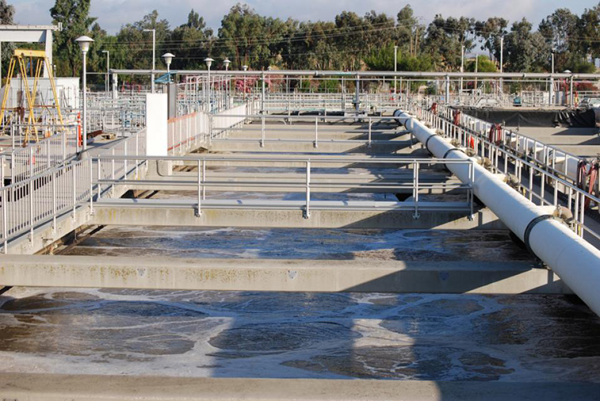The United States of America ranks 13th in the overall quality of its infrastructure. From our roads to utility pipes, the U.S. is lagging behind other developed countries in infrastructure spending.
According to the American Society of Civil Engineers (ASCE) report card, California has a C- overall grade rating on its infrastructure, while the Inland Empire, comprised of Riverside and San Bernardino counties, has a C grade rating. With attention to drinking water and wastewater, the ASCE highlights that the Inland Empire’s “aging infrastructure still needs some attention,” with flood control and wastewater receiving C and C+ grades.
As California expects more devastating droughts, Southern California experiences additional strains, whereas the Inland Empire is severely under-resourced. For the most part, utility and water districts have faced the urgency of addressing the climate crisis, such as increasing costs of enhancing infrastructure while delivering quality water to their ratepayers. In 2012, California declared water a human right to close the gap for the one million Californians who lack access to clean, reliable water. While noble, this effort will fail as it solely depends on infrastructure spending to achieve its humanitarian outcomes to provide water to every Californian. Compounded with the aging workforce and forthcoming retirements of previous generations, there is a dire loss of knowledge, skills, and human capital, which places those same agencies in a bind to fill those voids with qualified applicants. As a point of reference, a 2018 report by the Metropolitan Policy Program at Brookings authored by Joseph Kane and Adie Tomer states that some water occupations are significantly older than the national median, 42.2 years old, including water treatment operators, at 46.4 years old.Local Advertisement
Help is within the horizon as the Infrastructure Investment and Jobs Act will invest around $550 billion in new federal investment in our nation’s roads and bridges, water infrastructure, resilience, internet, and more. This plan asks Congress to deliver clean drinking water and wastewater infrastructure, a renewed electric grid, reliable high-speed internet, and clean energy transmission and EV infrastructure. As leaders of local water districts, with almost 10% of the Act earmarked for water infrastructure alone, we understand the importance and gravity of utilizing taxpayers’ dollars to maintain efficiencies while modernizing our operations.
As we look at the prospects of the investments in infrastructure, we must be strategic and mindful of the families who experienced the most impact from the pandemic. For perspective, the Inland Empire had the slowest recovery in the nation following the 2008 mortgage crisis, and economists have projected that it will take 14 times longer for families living in poverty to recover from the pandemic fully.
We cannot overlook the necessity of workforce development and channeling our resources to educate and train the next generation of water professionals and leaders. Part of kickstarting our local economy post-pandemic means that we center those frontline communities nestled in the cities we represent and develop partnerships with water/wastewater agencies and community partners that create bridges to opportunity.
We founded Inland Empire Works (IEWorks), a regional training water/wastewater workforce consortium that will be critical to educating, training, and placing communities of color into pathways towards a secure water career through an internship and pre-apprenticeship or apprenticeship. In their report, Kane and Tomer highlighted that water/wastewater jobs require the least formal education, in which 53 percent of workers have a high school diploma or less, yet 78.2 percent of water/wastewater workers need at least one year of related work experience. Water treatment operators require two to four years of related work experience. These programs will open the door by providing applied learning opportunities, connecting those with a local agency that provides good-paying jobs, benefits, and upward mobility. With seed funding from the United States Department of Education and California High Road Training Partnership, fiscal and program support from Bay Area-based JVS, and BAYWORK, we have launched this initiative to ensure economic equity and infrastructure resiliency across the region.
Source: http://iecn.com/the-future-of-water-wastewater-in-the-inland-empire/
By Gracie Torres, Vice President, Western Municipal Water District, Division 2; and Channing Hawkins, President, West Valley Water District, Founders, IEWorks


Recent Comments